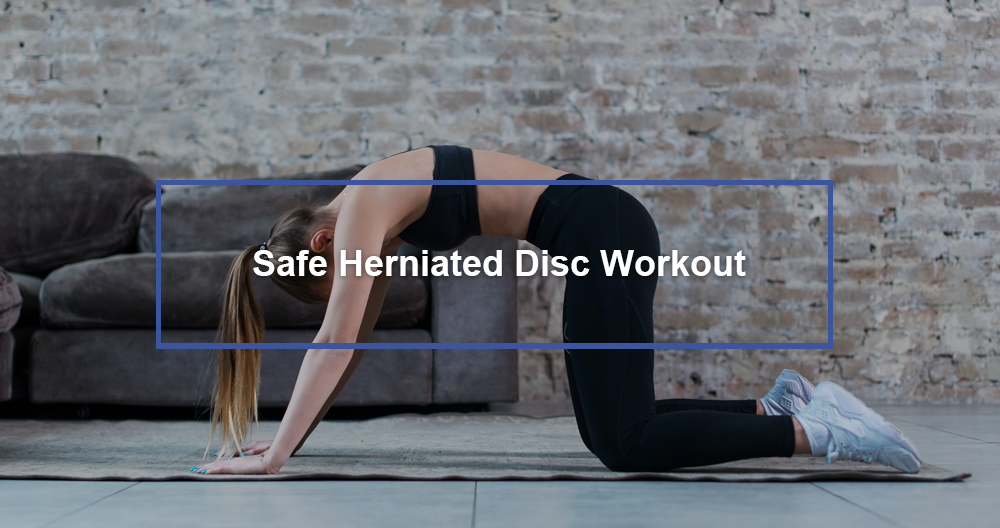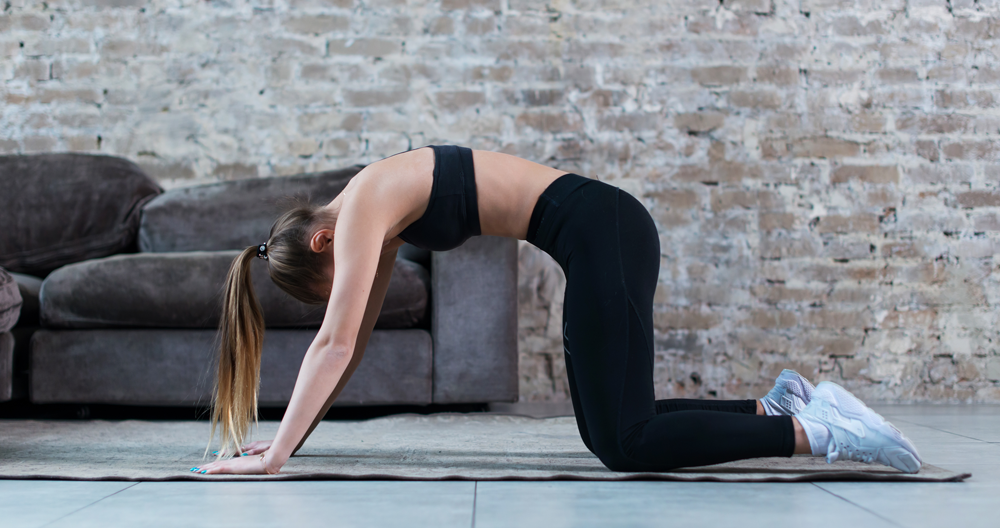
As with most back problems, gentle exercise can be used to treat herniated discs. If the inner soft jellies of the disc are unable to withstand the tough outer, this is known as a herniated disc. It can be extremely painful and could lead to:
- back pain
- Neck pain
- Arm pain
- Tingling, weakness, or numbness in the leg or foot
- Tingling, numbness or weakness in one hand
Most people with a herniated spinal disc don’t need surgery. Many doctors recommend physiotherapy for the treatment of herniated disc symptoms. Any disc in your spine can become herniated. This includes the neck. But it most often occurs in the lower part of the back. There are many exercises that can help depending on the location of herniated disc.
What does it feel like to have a herniated disc?
Low back pain is the most common symptom of a bulging lumbar disc. This pain can last for several days, then subside. Leg pain, numbness/tingling, and/or weakness often follow. Leg pain can often travel below the knee and affect the foot and ankle.
How long does it last?
Most patients suffering from lumbar disc herniation should experience improvement in a few days or weeks. Most patients will be symptom-free within three to four months. These are some exercises that can be used to relieve your back pain due to herniated discs. It might also help to know more about herniated spines.
Exercise 1: Standing Lumbar Extension
Why it is beneficial: It reduces the pressure on your back discs.
Steps:
- Stand tall
- Place your hands on the hips
- To extend your lower back, push your hips forward.
- For 2-3 seconds, hold the button down.
- For a total 10 repetitions, do the same.
Exercise 2: Standing Row with Resistance Band (special elasticband)
Why it’s so beneficial: It can reduce pain.
Steps:
- Attach the band to a sturdy object such as a doorknob, or staircase post.
- With your feet wide apart, stand tall and bend your knees slightly. Grab the end of the band using both your hands.
- Bring the band towards your face, and bend your elbows. Your forearms should be parallel to the ground.
Repeat the process 10 times. Take a rest for 10 seconds, then go back and repeat the procedure 10 times.
Exercise 3: Prone on Elbows
It’s beneficial because it helps align the discs.
Steps
- Lie down on your stomach.
- Place your hands on or near your shoulders.
- Push up and raise your back, while keeping your forearms flat on the ground.
- For 30 seconds, you can hold this position.
Repeat this process five to ten times.
Exercise 4: Cobra pose
Why it’s so beneficial: You can go from the Prone on Elbows into the Cobra pose. This is a very popular yoga pose.
Important: Cobra Pose (or prone on elbows) is an advanced form of prone. You should not be able to perform prone on your elbows.
Steps:
- Lay on your stomach, with your hands resting on the floor, your head and chest facing down.
- For 10 seconds, hold the button down.
- Lower your head and shoulders.
Repeat this process five to ten times.
Exercise 5: Sciatic Nerve Relaxation
Steps:
- Place your arms in front of you, your knees bent, your feet flat on to the ground and sit down on a chair.
- By bending your neck, place your chin on your chest. Then, bend forward to your torso.
- As you extend your neck and chest, slowly straighten the leg. Flex your ankle while doing so. NOTE: Your leg may not be straightened completely without pain or other symptoms.
Return to the beginning position.
Complete 2 sets of 10 for the affected side.
You can also treat herniated discs with:
- Resting: a few days of rest is enough to soothe severe pain due to lumbar disc herniation. Resting for more than this can lead to stiffness and worsening of the condition.
- Anti-inflammatory drugs: medication such as naproxen or ibuprofen may be used to relieve pain and reduce inflammation.
- Physical therapy: Specific exercises that increase range of motion, strengthen core muscles and support lower back and core muscles can be used to alleviate pain and reduce the chance of you injuring yourself again.
- Spinal manipulation: This is the manipulation of the lower back’s joints to increase range of motion, and decrease pain.
- Massage therapy: may be able to improve blood circulation and relax muscles, thereby helping to relieve pain.
- An epidural steroid injection: Injection of corticosteroids in the affected area can help reduce inflammation and pain.
What exercises can help?
Rehabilitation from a herniated distal disc is often aided by physiotherapy and exercise. A doctor will often recommend that you take a break for several days following a herniated distal.
Mild activities and gentle exercises can help strengthen the muscles supporting the spine and decrease pressure on it. They may also improve flexibility and decrease the likelihood of a herniated or bulging disc.
Your doctor might suggest that you begin slowly and increase your level of activity slowly. They may also discuss the best and worst exercises to do in recovery.
You can ease a herniated disc by performing gentle activities like:
- Yoga
- Swimming
- Walking
- Cycling
Do all exercises slowly and controlled, especially when lifting or bending. You should not feel pain while doing exercises. If an individual feels pain, they should stop doing exercises and talk to their doctor.
Exercises to Avoid
Heavy lifting, sudden pressure on the spine, and repetitive strenuous activities can all lead to a herniated disc. Patients with a herniated distal disc should not engage in strenuous activities while they recover.
Avoid any exercise that causes pain or makes the pain worse. If you have sciatica, avoid hamstring exercise.
It is possible to steer clear of high-impact activities such as jogging, martial arts, and other strenuous exercise. These activities can damage the spine.
The safest way for you to reduce your symptoms is to start small and build up to more intense exercises. It is also a good idea to start stretching and exercises early in the day.
It is important to consult a physician about the best exercise plan for your specific needs.
What are the risk factors for a herniated disc?
Here are some risk factors to consider:
- Age: Most people suffering from back pain caused by herniated discs are between the ages of 30 and 50.
- Sex: The chances of a man having sex are twice that of a woman.
- Smoking
- Heavy lifting
How can a herniated disc be diagnosed?
The diagnosis of a herniated spine is often based on the person’s medical history and symptoms. Exams are performed to examine the neurologic as well as the musculoskeletal system. You may also be able to do tests like the straight leg lift test, which checks for disc problems in the lower spine.
When severe or worsening neurological symptoms are present or if other serious conditions exist, MRI and CT imaging tests should be performed. Also, in preparation for surgery and injections, imaging is also performed.

